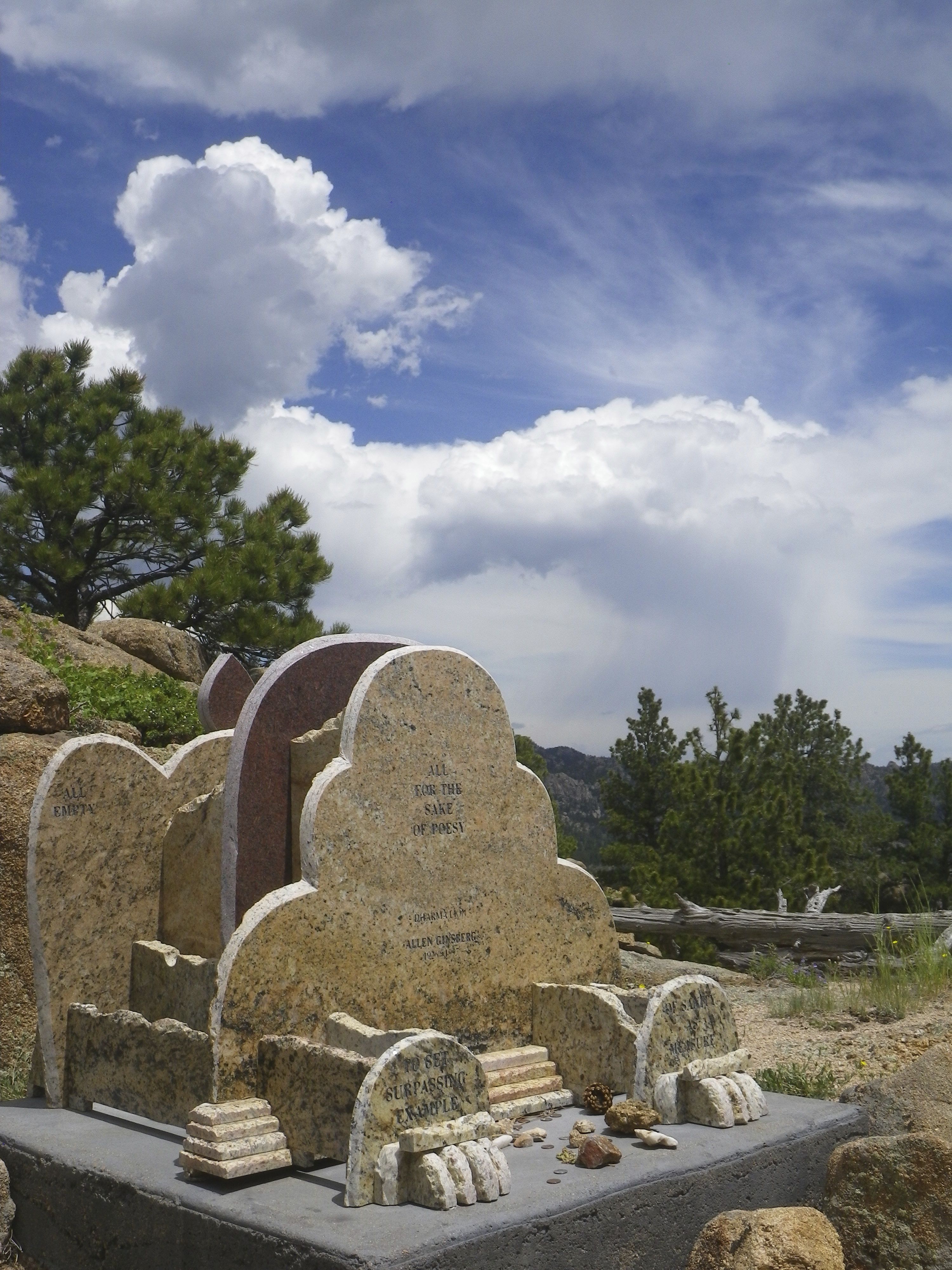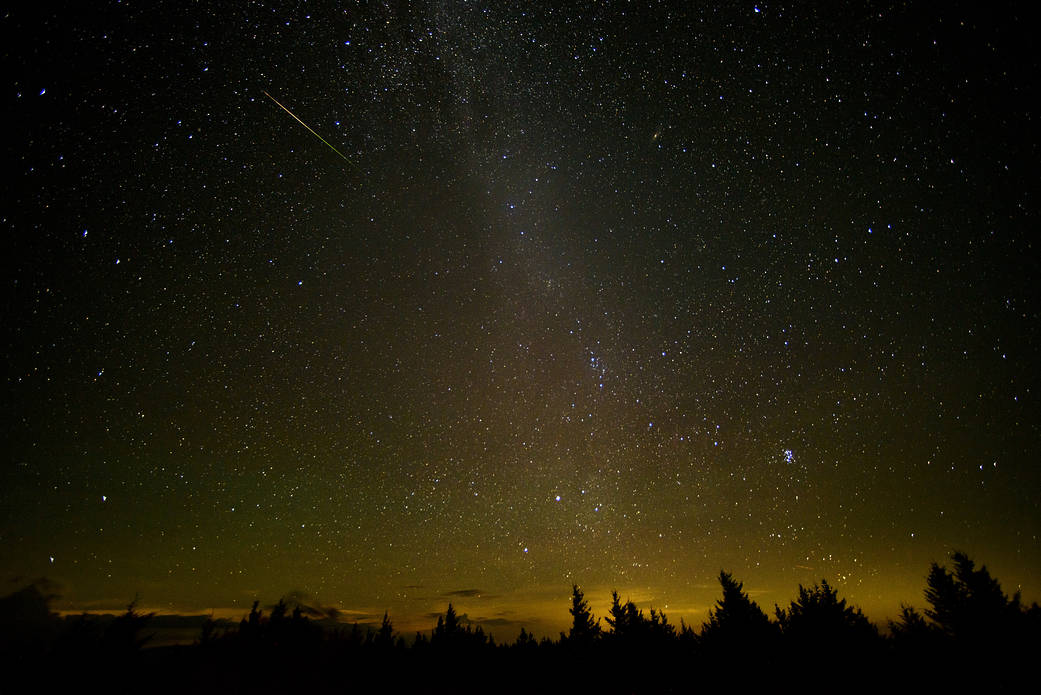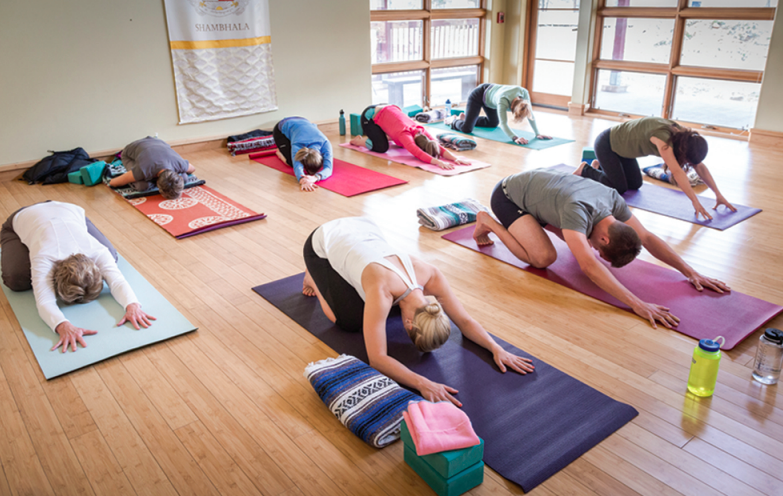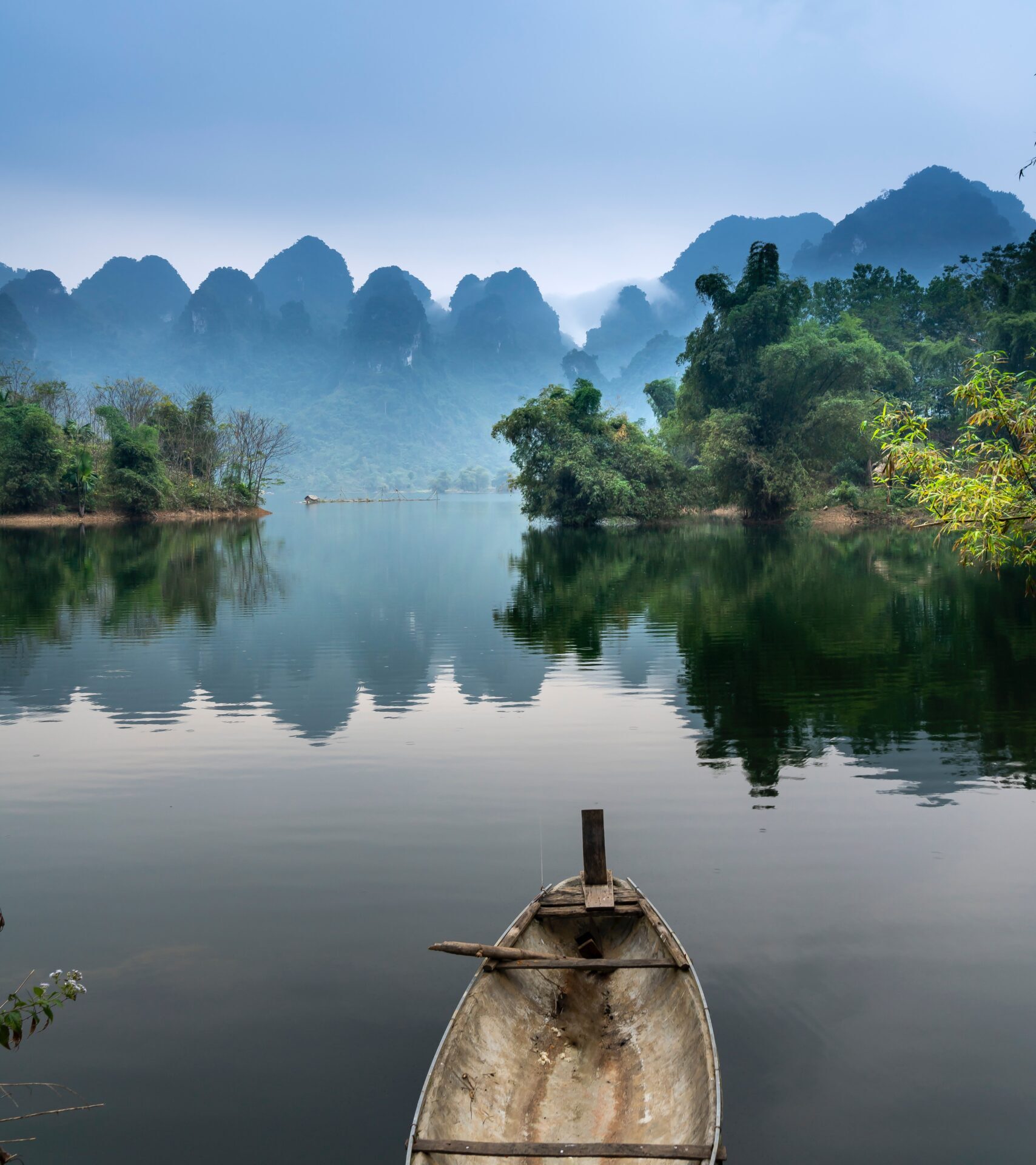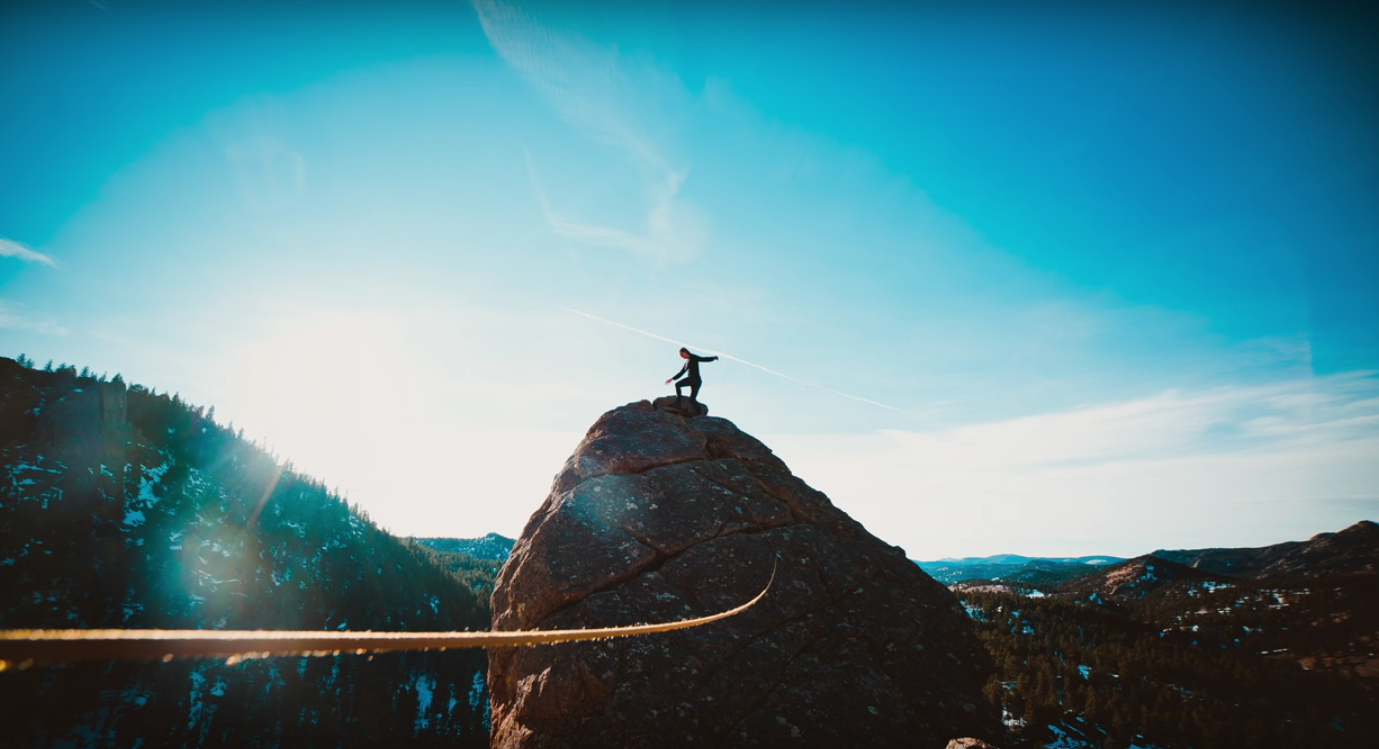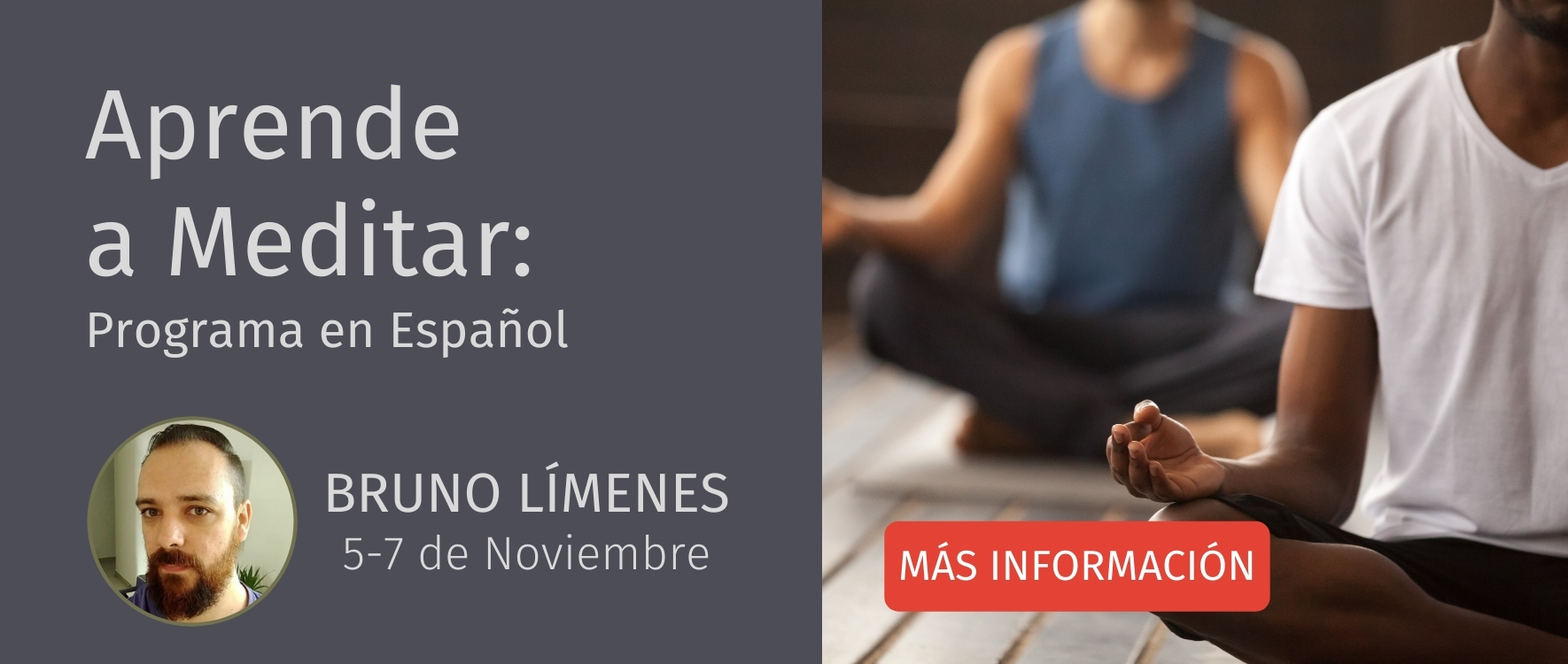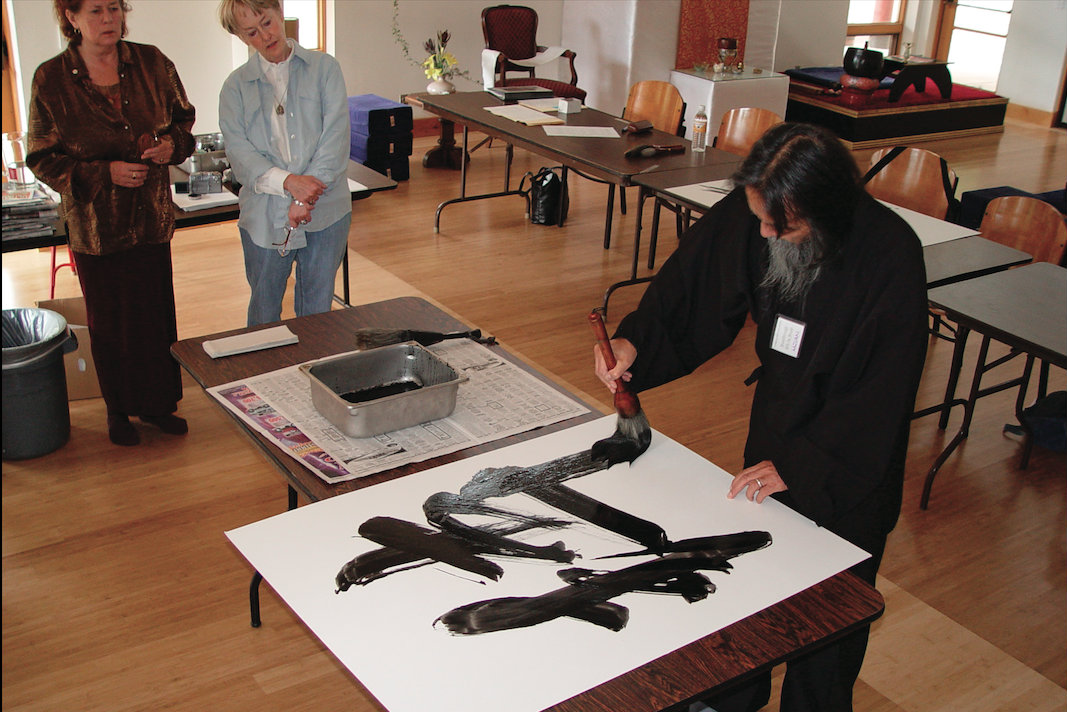Establishing the Ground
By Ryan Stagg
Ryan Stagg is a Shambhala Mountain Center community-staff member.
Today I rose with the sun and trekked up to the Great Stupa to meditate within its silent sanctuary. As I moved along the path my nose and ears went numb in the cold air that had settled in the valley overnight. The creek was burbling and there was a hint of warmth in the freshening morning breeze. Then I listened to the crunching gravel as I circumambulated the stupa, letting my breath and heart slow from the hike and with any luck accruing a little merit for the day ahead. My eyes were teary from the cold and the pollen, and I had the sensation that the whole earth was made to spin about the stupa by my strolling feet. Then I bowed and sat before the enormous golden Buddha and after awhile sunlight began to flood forth through the eastern window, illuminating the chamber. I’ve never known a better way to begin the day.
I stayed long at work out of excitement for the things I was learning and the projects to come, and then in the late afternoon I set off to Marpa point at a torrid pace. The rocky summit stands high above the scattered lodges, tents, shrines and stupas that compose the mandala of Shambhala Mountain Center. It is a fitting acknowledgement to the great Tibetan yogi known for bringing teachings from India to Tibet. It is a wonder, and a testament, that his influence resounds so many centuries later in the mountains of North America.
As I ascended, the shadows of pine cast long upon the mountainside and I saw an elegant doe grazing peacefully between them. Robins probed for worms, nuthatches contorted on the limbs of fir trees, and a steady breeze blew scattered clouds along the ceiling of the sky. The drone of an airplane echoed, reminding me temporarily of all the bustle and commotion I had left behind for the summer. It was an unanticipated liberation to put my cellphone, car keys and wallet away in the tent. What were once my constant companions, plugging me into the networks of modern society, were suddenly superfluous objects—paperweights and an unwieldy timekeeper.
Approaching the summit of Marpa point, the pine and fir gave way to lichen covered granite and low, barbed shrubbery. Prayer flags of blue, yellow, red, green and white flapped and fluttered. In each crisp note of the whipping flags there was a whisper of my lived experience; of the precision of mind in reflecting its environment.
I softened my step and relaxed my squinting brow. Reaching the crest line behind the rocky peak I browsed the little rock piles that stood precariously here and there. I was breathing deeply and feeling satisfied by the burning in my legs. I veered south, measuring my ambition and time as I eyed the trail that wends several miles along the perimeter of the land.
But no sooner than I set out, an odd scene stopped me in my tracks. I wasn’t expecting the memorial to Allen Ginsberg—a granite slab with lion’s feet. Upon the neighboring rock was old Charlie sitting with his legs crossed and conjuring a fleeting melody from a little wooden flute. A sense of absurdity set in, my head askew as Charlie greeted me and embarked on an extended explanation of the origins of his Native American instrument somewhere in South Dakota. As he spoke my attention wandered here and there. I noticed the gilded spire of the Great Stupa in the west, the colorful flags upon Marpa point to the north, the rolling expanse of landscape to the east, and here in the southern quadrant, the inexplicable yet appropriate pairing of Allen and Charlie.
In the midst of this curious symbolism I gleaned some vague truth…some assurance; a sense of my belonging in this swirling array that both soothed and concerned me. This life I was making in the mountains and forest, in work and in play, was mine to interpret, mine to enjoy, and mine to sacralize.

